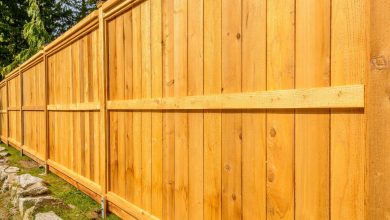The Brief Guide That Makes Creating A More Sustainable Home Simple

In April this year, President Biden agreed to reduce greenhouse gas emissions in the US by 50% before 2030. That means we’ve got a lot of work to do in the next 9 years.
If we don’t, we’ll face irreversible global warming challenges including extreme weather, famine, and ultimately, extinction. So, if you’d like to do your bit for saving the planet, now’s the time to get started.
As a smart homeowner, you can do your part by taking steps to change your residence into a sustainable home as quickly as possible. Here’s how to get started.
Table of Contents
It All Starts With a Smart Meter
The electricity created from fossil fuels is the biggest contributor to the carbon emissions behind global warming. A solar system to see to your energy needs is the ideal solution, but there are more affordable ways to embrace a sustainable lifestyle.
Installing a smart meter helps you keep tabs on how much electricity you’re using at home. These amazing devices are programmable to control your energy use, by cutting down on electricity use when it’s not needed.
For instance, leaving your HVAC running all day while no one’s at is a huge waste of energy. Yet no one wants to come to a cold, dark, house in winter.
You can set your smart meter to shut down your HVAC when you leave and get things warm and toasty again before you return.
Insulation Is Key to a Sustainable Home
Gaps in your home’s envelope cause hot and cold air to move freely in and out of your living spaces. This wreaks havoc with your HVAC, causing it to work overtime and waste electricity.
A well-insulated home retains heat, so your HVAC doesn’t need to keep reheating your living spaces unnecessarily. You should ensure your has PEX insulation installed to prevent the heat from escaping.
If you have an old with a boiler for heating your spaces, you should also insulate the steam trap. Uninsulated steam traps can cost you up to $300 per year in wasted energy.
Green Cleaning
Detergents and cleaning products can cause serious harm to the environment. They enter the water supply when you wash them down the drain, and it takes huge volumes of energy to purify this water again.
Make the switch to responsible homeownership by replacing these harsh chemicals with gentler alternatives, like vinegar, bicarbonate of soda, or lemon juice.
These all work well to kill bacteria, remove odors, and combat grease without harming the environment.
Embrace (Almost) Zero Waste
It takes vast amounts of energy to maintain and clean up landfill sites every year. Don’t add to the problem.
Recycling is the best way to do your part in reducing pollution. Every eco-friendly has recycling bins to ensure that plastic, glass, and paper end up at the recycling plant, rather than the local dump.
Use these bins as a receptacle for all your food waste, let it decompose for a few weeks, and use the results as compost for your vegetable garden.”You’ll get more ideas like this if you enroll yourself in garden design courses.
Get on Board With Sustainability Now
These are only a few of the things you can do to create a more sustainable and a better future for us all. You can also install energy-efficient lightbulbs, drive less, and replace your appliances with energy-efficient ones.




